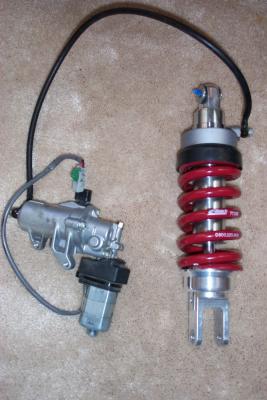
Works Performance GL1800 Shock with OEM Honda pre-load adjuster |

Works GL1800 Shock |
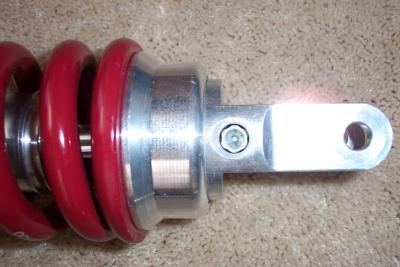
The rebound dampening is adjustable via an allen screw on the bottom of the shock |
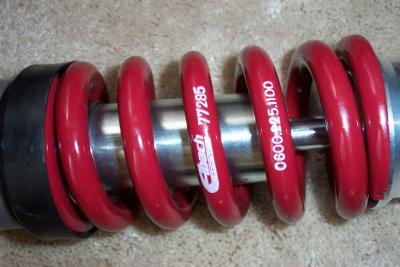
The spring has a 1,100 lb spring rate. The OEM shock has a 900 lb spring rate. |
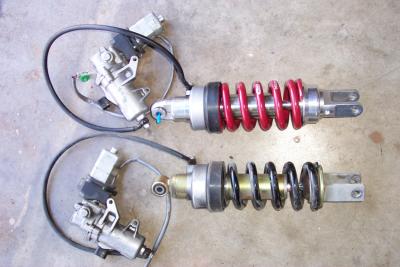
Here is a look at the OEM shock side by side with the Works Performance shock |
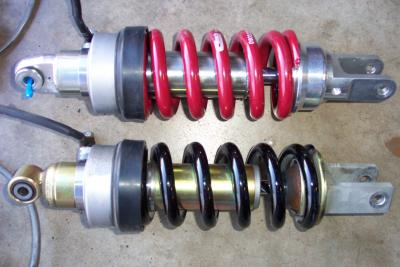
You can tell see a difference in the springs and shock body. |

First, remove the rear wheel cover |
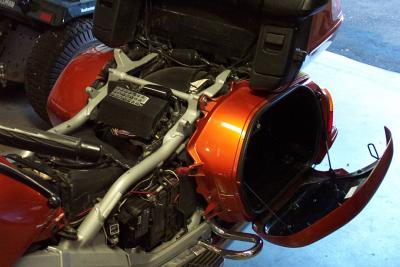
Next, remove the seat |

Then remove the cover for the latch assy inside the trunk |
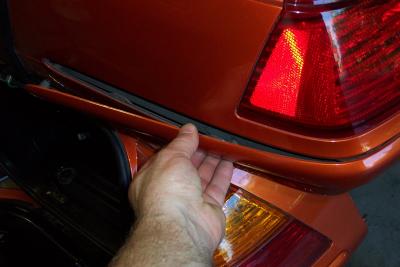
Trim comes right off, once the two screws in the trunk are removed |

Remove the four screws in the trunk (two each side) that hold on the trim pieces |

Side trunk trim piece removed. Not two plastic threaded tangs that the screws go into |
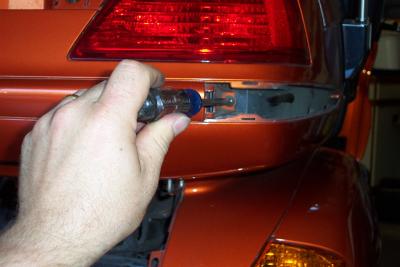
The rear trim piece is screwed on from the outside, and the srews are exposed once the side pieces are removed |

Rear trim comes off after the two screws are removed |
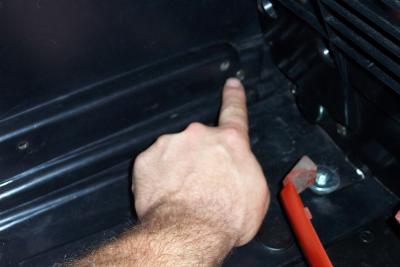
Screw locations inside trunk for trunk bottom cover |
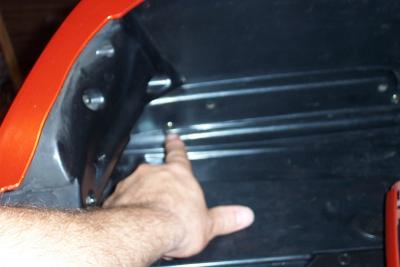
Screw location inside trunk for trunk bottom cover. |
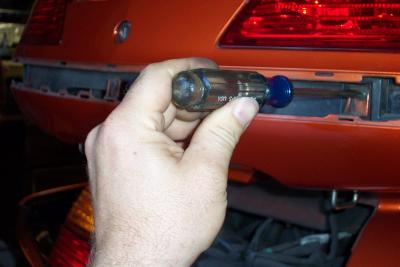
Trunk bottom cover has two screws back by the tail lights that hold it on. |
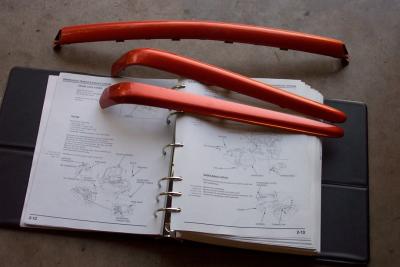
Trunk trim pieces removed |
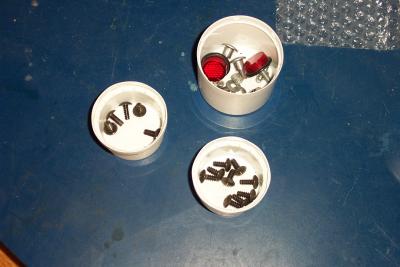
Keep hardware inside cups and seperated so you know what screws go back where. Most of the trim screws are all the same. |

Trunk bottom cover pulls down and aft once all the screws are removed |
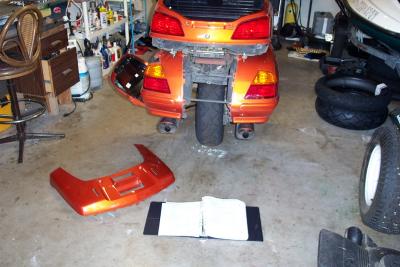
Trunk bottom cover removed |
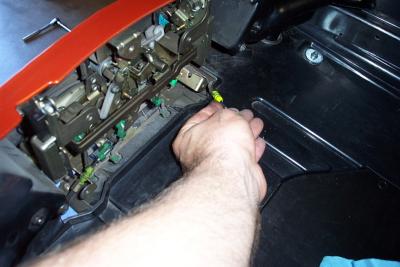
Next, dissconnect the cables for the saddlebag latches |
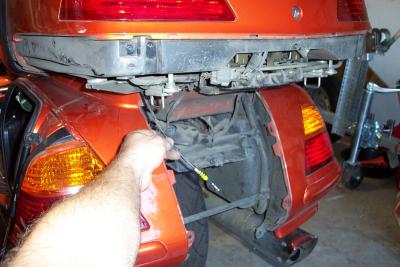
Note saddlebag cable pulled free |
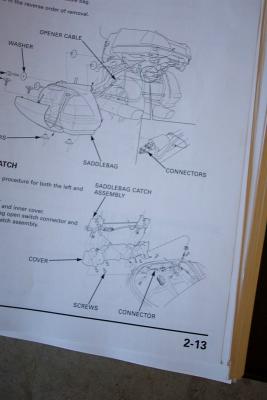
Now you have to find this connector and dissconnect it |
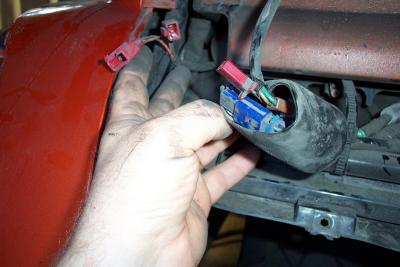
The red plugs are for the left bag and the blue plugs are for the right saddlebag |
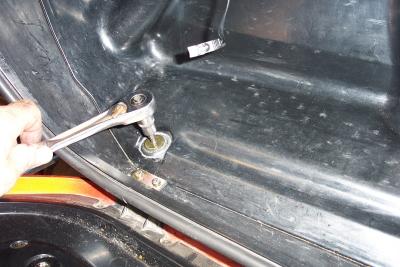
Now you can start unbolting the four bolts that hold on the saddlebag |
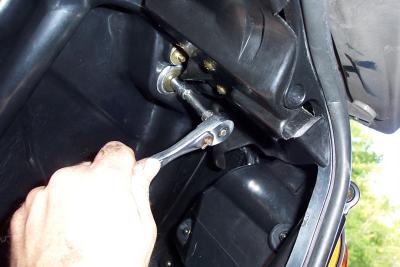
Saddlebag inner bolt removal |
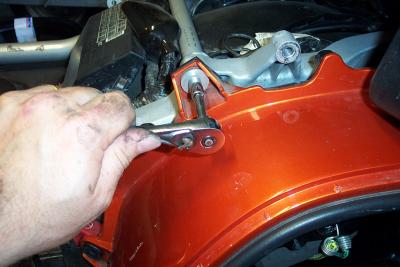
Outter saddlebag bolt removal |

Once the bolts are out, pull the bag out at the bottom and down making sure to clear the pocket at the top |
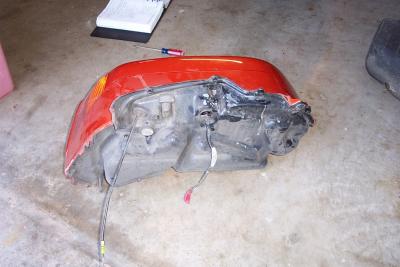
saddlebag is now free |
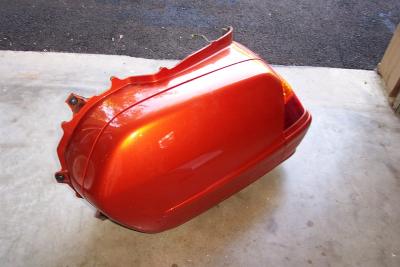
Saddle bag removed |
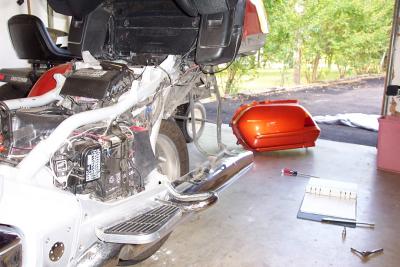
Now you can see the frame rails for the bags |
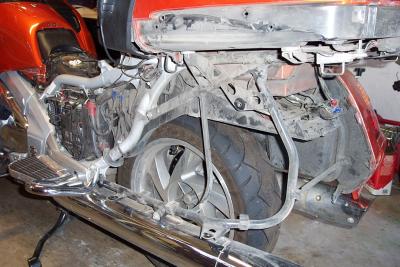
Dirty bike. Dust collects all over the back end. |
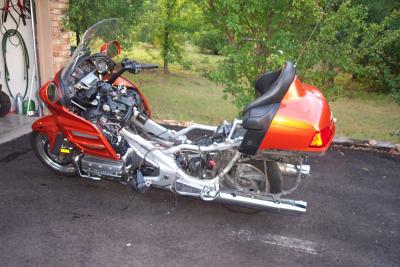
The next step is removing the top shelter and gas tank (covered in another photo series) |
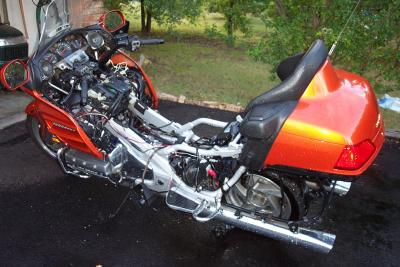
I hosed off all the dust and tried to clean it up as best I could before going any further |
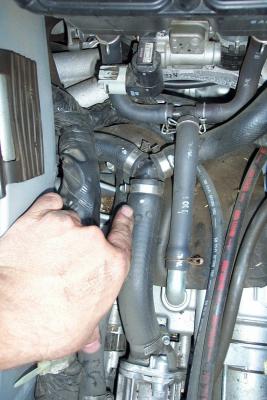
When you get the tank out, be sure to tighten these hose clamps. There are three more under these too. |
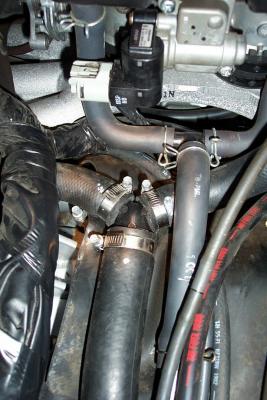
I turned the hose clamps. Cover them with hard rubber material to prevent them from rubbing a hole in the bottom of the gas tank |
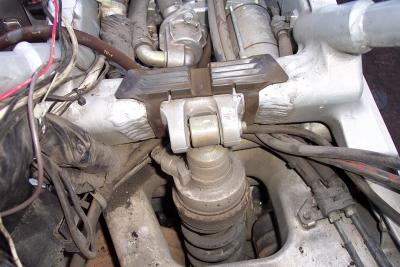
Here is the first look at the top shock mount |

I also took this opportunity to inspect all my welds |

Unplug the connector on the side of the unit |
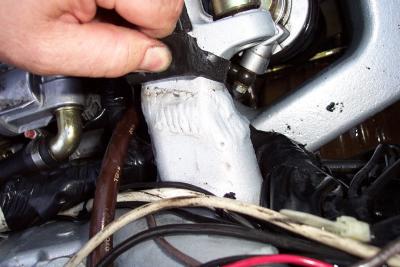
Weld checking |
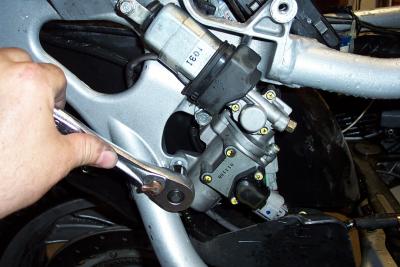
Next I removed the three bolts holding on the electrical/hydralic pre-load unit |
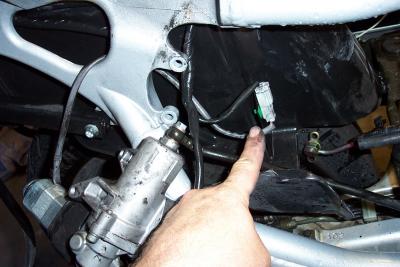
This connector also has to be disconnected |
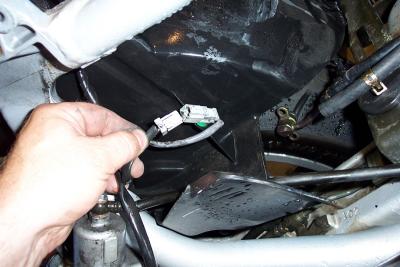
Unpluged connector |

Here is the bottom shock bolt |

Removing bottom shock bolt |
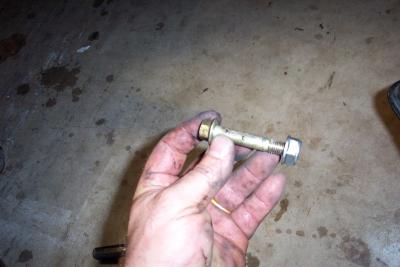
Bottom shock bolt pulled out |
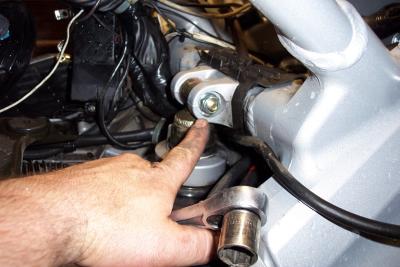
Top shock bolt |
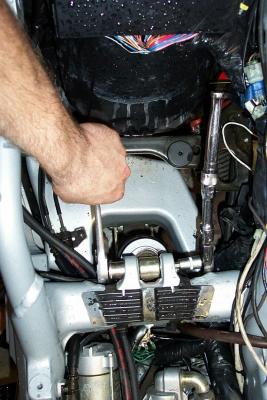
You have to hold both sides of the top shock bolt to remove it. One side uses an allen, the other a socket |

Top shock bolt removed |

Once both bolts are out, the shock comes right off |

When I removed the right saddlebag, I discovered the vent cap for the rear end was missing! |
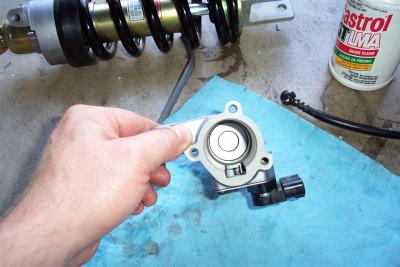
Here is a look at the top of the piston inside the rear shock hydralic drive unit, with the motor removed |

Here you can see the worm drive and the plunger on the right angle drive unit and the housing for the hydralic unit. |
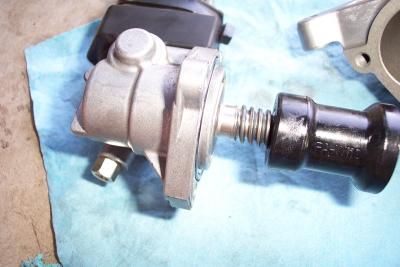
Here is a closer look at the plunger and worm drive on the motor |
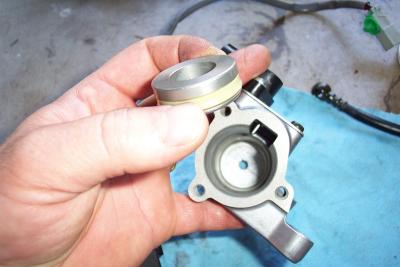
Here is the simple piston, removed from the chamber |
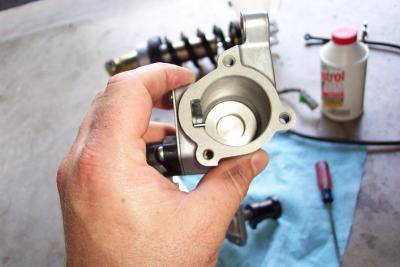
Here is another look with the piston re-installed |

Refilling the unit through the bango bolt hole. I recommend 5 weight Honda suspension fluid (not the brake fluid pictured) |

New Hole added under damper |

Damper unit |
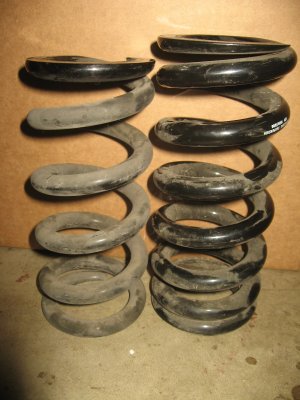
ProgressiveRearSpring.jpg |

RearShockActuator.jpg |

ActuatorGap.jpg |











